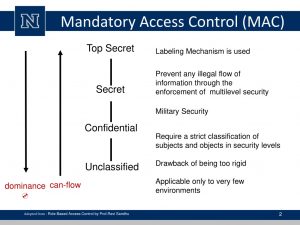
8 REASONS WHY YOU MAY NEED ACCESS CONTROL DEVICES AT YOUR WORKPLACE
REASONS WHY YOU MAY NEED ACCESS CONTROL DEVICES
WHAT IS AN ACCESS CONTROL SYSTEM
Access control is a crucial part of data security that determines who has access to and uses company data and resources. Access control policies ensure that users are who they say they are and have proper access to company data through authentication and permission.
TYPES OF ACCESS CONTROL
Installing an access control system in your house or business is a requirement if you value security – and who doesn’t? It’s what lets authorized folks in while keeping the unapproved out. You might not want all staff in your organization to have access to your main office or safe. Access control is the greatest way to ensure that only the individuals you trust have access to sensitive areas of your property.
Access control systems do not all work in the same way. To restrict entry to your house or business, there are four basic forms of access control.
Discretionary Access Control (DAC)

The owner of a company can decide how many people have access to a certain location using a discretionary access control system (DAC). A list of authorized users is kept at each access control point. When a keycard is swiped, a PIN is punched, or a fingerprint is scanned, the system compares the credential to the list and grants or refuses access based on the previously established permissions.
When compared to other types of access control, DAC systems are the most versatile and offer the maximum number of permits. Because it is the most adaptable, it is also the least secure, especially when compared to other types, such as required access control systems. Because one individual has complete authority over the system, he or she may give access to someone who shouldn’t. Companies that require the most ease of use and flexibility should adopt discretionary access control solutions.
Mandatory Access Control (MAC)

Mandatory access control systems (MAC), on the other hand, are the most secure sort of access control. Only the owners and custodians have access to the systems. The system administrator sets all access control settings, which cannot be changed or removed without his or her approval.
A MAC system works by identifying all users and granting them access to regions depending on the system’s programming, rather than producing an access list on each individual entry point as a DAC system does. You’ll need 150 user permissions set up in the system if you have 150 employees.
The strictest and most secure sort of access control is mandatory to access control, but it’s also the most rigid. The administrator must reprogramme the specific user’s access, not just the security lists at the entry point, in order to modify permissions. Companies and agencies that demand the highest levels of security typically utilize MAC systems.
Role-Based Access Control (RBAC)
Role-based access control (RBAC) is gradually gaining traction as the most popular access control method. In contrast to a MAC system, which assigns access to individual individuals, an RBAC system assigns permissions to a specific job title. It reduces the amount of time it takes to set up or alter user access.
You wouldn’t have to build 25 distinct security profiles in the system if you have 20 salespeople, two managers, and three accountants, for example. You’d only need to make three of them: one for each job title. When an employee is promoted, simply provide them with credentials that are appropriate for the new position, and they are ready to go.
Rule-Based Access Control
Rule-based access control, not to be confused with the other “RBAC,” is frequently used as an add-on to other types of access control. Rule-based access control, in addition to whatever type of access control you pick, can adjust permissions based on a set of rules specified by the administrator.
If your firm closes at 5 p.m., there’s no reason for anyone, including managers, to have access to the main office after that time. You can define a rule to block access to everyone from 5 p.m. to 9 a.m. the next morning with rule-based access control. For almost any occasion, rules can be made.
WHY DO YOU NEED ACCESS CONTROL AT YOUR WORKPLACE
Benefits of having access control devices at your organization.
1. Without your awareness, people can gain entrance to the building.
Although it may not appear to be a major issue, you may not want your employees, customers, or vendors to have access to the premises at any time. Inside your company, unchecked activity can cause a slew of problems.
We frequently hear from business owners who are irritated because staff entered the facility without their knowledge late at night or on weekends, which can lead to a variety of problems, including the next item.
2 . Reduction of staff/Employee theft.
Nobody wants to believe that their staff is stealing from them. Despite this, data suggest that 75% of employees will steal at least once from their employer.
Although access control cannot totally prevent theft, it can significantly reduce it by preventing employees from entering the building outside of their shifts or during off-hours.
3. Overcome employee sloppiness..
Despite the fact that no one intends to forget to lock doors, it happens to the best of us. The issue is that it may endanger your employees, property, and investments. Put your company’s security efforts at risk by relying on people’s memory for such a critical task as securing doors at night or on weekends.
4. Be sure that no staff member is locked out.
Businesses without access control systems, on the other hand, have trouble allowing personnel to enter the premises when they need to.
Perhaps an employee comes early to work and needs to wait for someone with a key to access the building. Perhaps an employee went out to get something and returned to find the door shut when she tried to enter the building. For your team and management, this type of problem may be both frustrating and time-consuming.
5. It is expensive to re-key doors.
You must rekey the doors to keep your business safe, whether someone misplaced her keys or an employee was fired and you did not return the keys. The disadvantage is that rekeying your business’s doors on a regular basis might be costly.
Rekeying doors is not only costly, but it can also be inconvenient to transfer keys to the appropriate team members.
6. Better tracking.
Employers may wish to gain a better understanding of who is entering and exiting the premises at any given time. A manager, for example, might want to know whether an employee is frequently late to work. Perhaps you’re dealing with employee theft on weekends and want to know who was on the job at the time.
Access control can provide you with more information on when and where individuals access your facility, as well as how they use it.
7. Control access to various parts of the building.
You may not want your complete team to have access to critical information in your facility’s offices or rooms. You might not want all of your staff to have access to the supply room. Access control, in either case, can assist you in making some portions of your organization off-limits.
8. Automation is now becoming more prevalent..
Many businesses contact us because they want their doors to open and close automatically between 9 a.m. and 5 p.m. For many business owners, taking this simple step can save them time and money.
You can even integrate your lighting and thermostat with your access control system if you want to go any farther. As a result, lighting, heating, and air conditioning can be turned on at specific times when personnel and consumers are present in various areas of your property. This level of automation can simplify your company’s operations while also lowering energy expenditures.
How Access Control Systems Can Help Your Business
A security measure used to regulate entry into your institution is an access control system. Access control systems allow you to limit who is permitted to enter your building, where they are allowed to go inside, and when they are allowed to leave.
Access control may help you construct layers of security around your firm, and the solutions will vary depending on your individual needs. You can, for example, install gates to secure your business’s perimeter. Then you can add front door card access to further secure your building. Then you can restrict access to floors, suites, or even individual offices to specific people and at specific times.
A thorough site inspection is the best method to figure out exactly what you need. A qualified security integrator will be able to recognize your requirements and work with you to create a tailored access control system that will improve your security and address the challenges you’re having in your organization.
